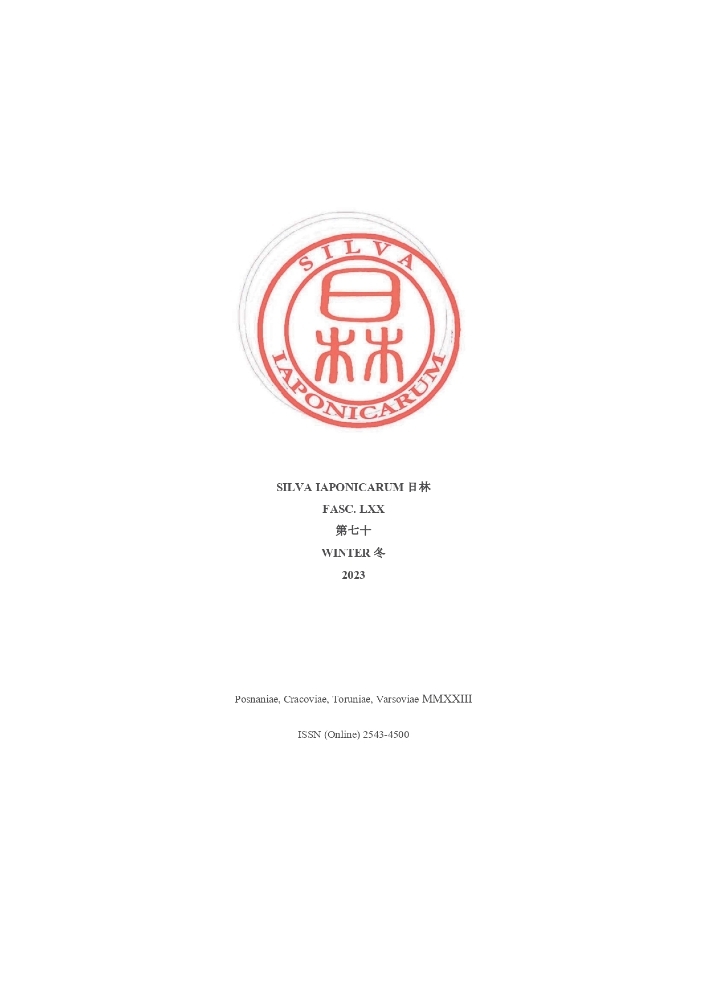Abstract
Review of Overseas Shinto Shrines. Religion, Secularity and Japanese Empire by Karli Shimizu, London, New York, Dublin: Bloomsbury, 2023. Xii + 278.
References
Breen, John, Mark Teeuwen 2010. A new history of Shinto. Chichester, West Sussex: Wiley-Blackwell. DOI: https://doi.org/10.1002/9781444317190
Cornille, Catherine, Christopher Conway (eds.) 2010. Interreligious hermeneutics. Eugene, Oregon: Wipf and Stocks.
Hardcare, Helen 1989. Shinto and the state, 1868–1988. Princeton: Princeton University. DOI: https://doi.org/10.1515/9780691221298
Hardcare, Helen 2017. Shinto: A history. New York: Oxford University Press.
Heisig, James W., Thomas P. Kasulis, John C. Maraldo (eds.) 2011.
Japanese philosophy. A sourcebook. Honolulu: University of Hawaii Press.
Kasulis, Thomas P. 2004. Shinto: The way home. Honolulu: University of Hawaii.
Keefe, Rosanna 2000. Theories of vagueness. New York: Cambridge University Press.
Kondō Yoshihiro 1943. Kaigai jinja-no shiteki kenkyū [historical research of overseas Shinto shrines]. Tokyo: Meiseidō Shoten. 近藤喜博.『海外神社の史的研究』. 東京: 明正堂.
Kordzińska-Nawrocka, Iwona 2012. “Kultura Japonii i jej cechy charakterystyczne [Japanese culture and its characteristic features]”. In: Anna Czajka (ed.). Kultury świata w dialogu [cultures of the world in a dialogue]. Warsaw: Wydawnictwo Uniwersytetu Kardynała Stefana Wyszyńskiego. 85– 112.
Kotani, Roland 1985. The Japanese in Hawaii: A century of struggle. Honolulu: The Hawaii Hochi.
Kozyra, Agnieszka 2019. “Are Japanese people religious? The problem of ‘syncretic religiosity’ in Japanese culture”. Analecta Nipponica 9 (2019): 41–57.
Maeda Takakazu 1999. Hawaii-no jinja shi [history of the Shinto shrines in Hawaii]. Tokyo: Daimeidō. 前田孝和. 『ハワイの神社史』. 東京: 大明堂.
Nakajima Michio 2013. Kaigai jinja atochi-no keikan hen’yō: samazama- na ima [transformation of the scenery of the places where overseas shrines were, various images of the present]. Tokyo: Ochanomizu Shobō. 中島三千男. 『 海外神社跡地の景観変容―さまざまな現在(いま)』. 東京: 御茶の水書房.
Ono Sokyo 1962. Shinto: The Kami way. Tokyo: Tuttle Publishing.
Pałasz-Rutkowska, Ewa 2005. “Japońskie reakcje na spotkania z Zachodem [Japanese reactions to encounters with the west]”. In: Janusz Krzywicki et al. (eds.). Wizerunek Europejczyków i kultury Zachodu w Azji i Afryce [the image of Europeans and western culture in Asia and Africa]. Warsaw: Wydawnictwo Trio.
Seaton, Philip A. 2016. “Commemorating the war dead at Hokkaido Gokoku Shrine”. In: Philip A. Seaton (ed.). Local history and war memories in Hokkaido. Abingdon, Oxon: Routledge. 161–178. DOI: https://doi.org/10.4324/9781315733685-9
Wong, David B. 2014. “Reconciling the tension between similarity and difference in critical hermeneutics”. In: Ming Xie (ed.). The agon ofinterpretations. Towards a critical intercultural hermeneutics. Toronto, Buffalo, London: University of Toronto Press. 165–186. DOI: https://doi.org/10.3138/9781442696303-011
Xie, Ming 2014. “Introduction: Towards a critical intercultural hermeneutics”. In: Ming Xie (ed.). The agon of interpretations. Towards a critical intercultural hermeneutics. Toronto, Buffalo, London: University of Toronto Press. 3–22. DOI: https://doi.org/10.3138/9781442696303
License
Copyright (c) 2023 Aleksandra Skowron

This work is licensed under a Creative Commons Attribution-NonCommercial 4.0 International License.


